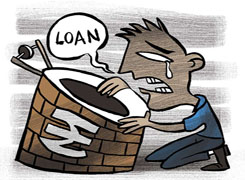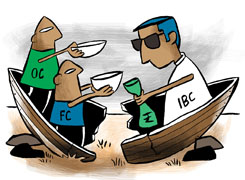Trapped in Debt: Civil Engineer with 91k Salary Seeks Advice
Ramalingam Kalirajan |10899 Answers |Ask -Follow
Mutual Funds, Financial Planning Expert - Answered on Jul 16, 2024
He has an MBA in finance from the University of Madras and is a certified financial planner.
He is the director and chief financial planner at Holistic Investment, a Chennai-based firm that offers financial planning and wealth management advice.... more

I am a Civil engineer working in esteemed Construction Company of the country having 11 years of experience. My current take home salary is 91,000 and due to some experiences of my life all my decision went bad and I have to pay almost 80 percent of my salary into Personal loan EMIs. I have exhausted the amount which is got from my last organization which was around 2 lakhs and I am running into huge trouble with almost no savings. I am living with my wife and 9 month old baby boy. I am Trapped in debt. How should I come of from this? Anyone please guide.
Assessing the Debt Situation
Understand the total debt burden and prioritize repayments.
Evaluate personal loan terms and conditions for possible restructuring.
Managing Current Expenses
Budget meticulously to cover essential expenses for your family.
Minimize discretionary spending to allocate more towards debt repayment.
Maximizing Income Opportunities
Explore opportunities for additional income leveraging your engineering skills.
Consider freelance projects or consulting work to boost earnings.
Debt Repayment Strategy
Focus on paying off high-interest loans first to reduce overall interest burden.
Negotiate with lenders for feasible repayment schedules or interest rate reductions.
Emergency Fund Creation
Start building an emergency fund gradually, even with small amounts.
Ensure it covers at least 3-6 months' worth of living expenses.
Family Financial Security
Review insurance coverage for health and life to protect against unforeseen events.
Plan for your child's future needs, such as education and upbringing costs.
Long-Term Financial Planning
Once debt is under control, prioritize systematic savings and investments.
Avoid high-risk investments; opt for diversified options suited to your risk tolerance.
Final Insights
By strategically managing your debts, expenses, and income, you can gradually regain financial stability. Seek professional advice if needed to tailor a plan that fits your specific circumstances.
Best Regards,
K. Ramalingam, MBA, CFP,
Chief Financial Planner,
www.holisticinvestment.in
You may like to see similar questions and answers below
Ramalingam Kalirajan |10899 Answers |Ask -Follow
Mutual Funds, Financial Planning Expert - Answered on Jul 06, 2024
Ramalingam Kalirajan |10899 Answers |Ask -Follow
Mutual Funds, Financial Planning Expert - Answered on Jan 02, 2025
Ramalingam Kalirajan |10899 Answers |Ask -Follow
Mutual Funds, Financial Planning Expert - Answered on Jun 21, 2025
Samraat Jadhav |2511 Answers |Ask -Follow
Stock Market Expert - Answered on Dec 17, 2025
Ravi Mittal |678 Answers |Ask -Follow
Dating, Relationships Expert - Answered on Dec 17, 2025
Reetika Sharma |427 Answers |Ask -Follow
Financial Planner, MF and Insurance Expert - Answered on Dec 17, 2025
Purshotam Lal |68 Answers |Ask -Follow
Financial Planner, MF and Insurance Expert - Answered on Dec 17, 2025
Ramalingam Kalirajan |10899 Answers |Ask -Follow
Mutual Funds, Financial Planning Expert - Answered on Dec 17, 2025
Ramalingam Kalirajan |10899 Answers |Ask -Follow
Mutual Funds, Financial Planning Expert - Answered on Dec 17, 2025
Ramalingam Kalirajan |10899 Answers |Ask -Follow
Mutual Funds, Financial Planning Expert - Answered on Dec 17, 2025
Ramalingam Kalirajan |10899 Answers |Ask -Follow
Mutual Funds, Financial Planning Expert - Answered on Dec 17, 2025
Ramalingam Kalirajan |10899 Answers |Ask -Follow
Mutual Funds, Financial Planning Expert - Answered on Dec 17, 2025
Mayank Chandel |2576 Answers |Ask -Follow
IIT-JEE, NEET-UG, SAT, CLAT, CA, CS Exam Expert - Answered on Dec 17, 2025

























